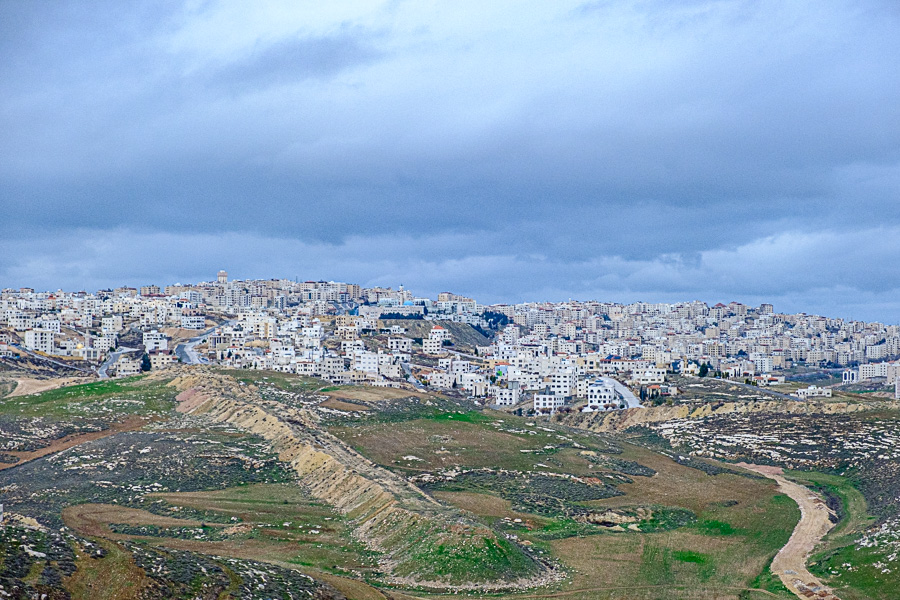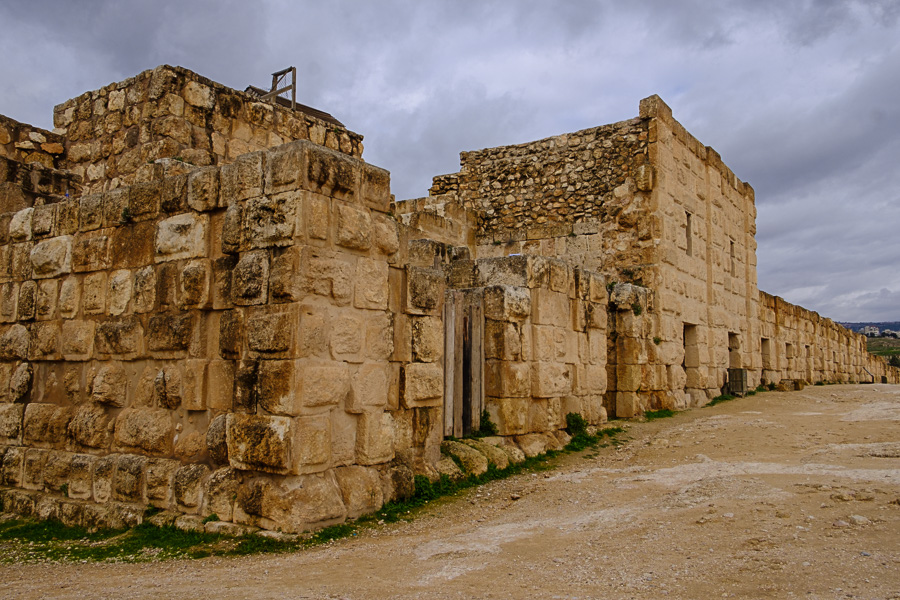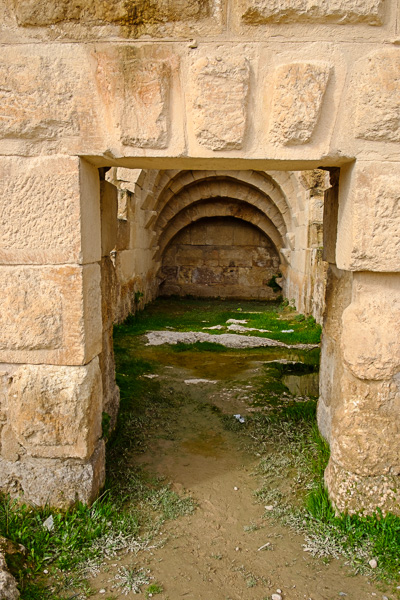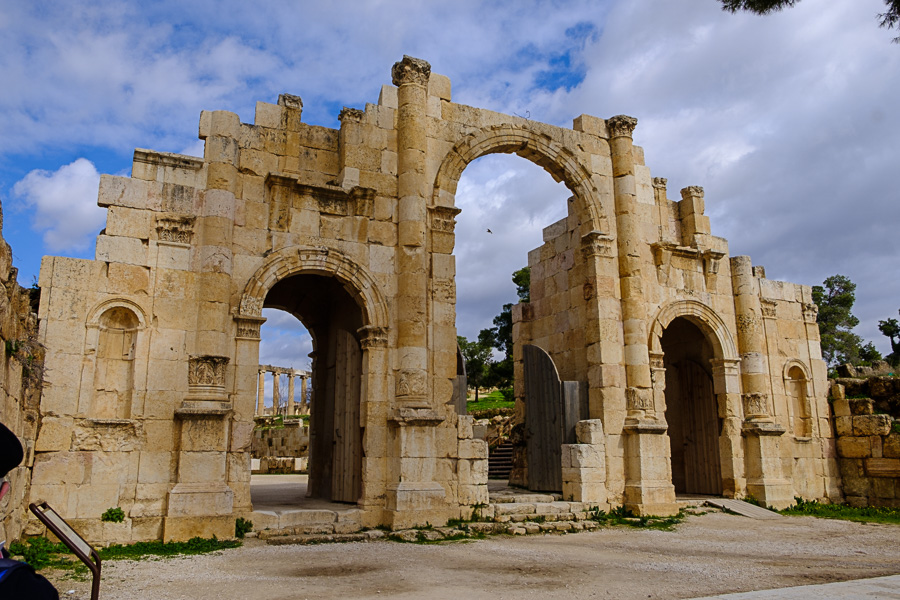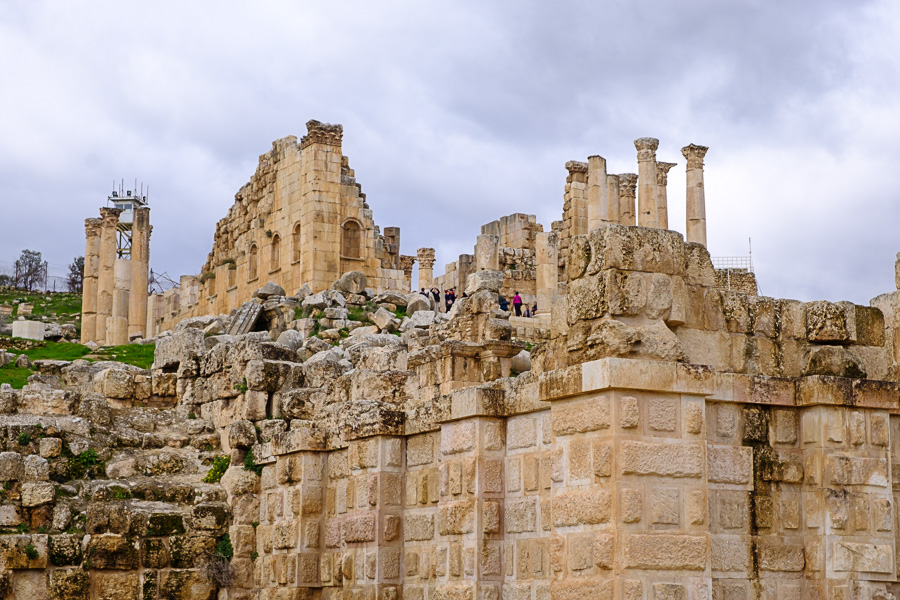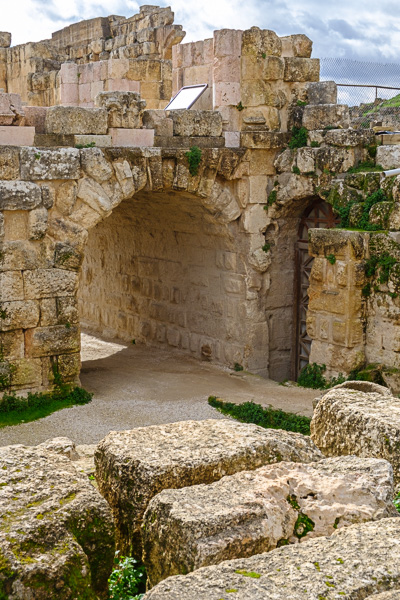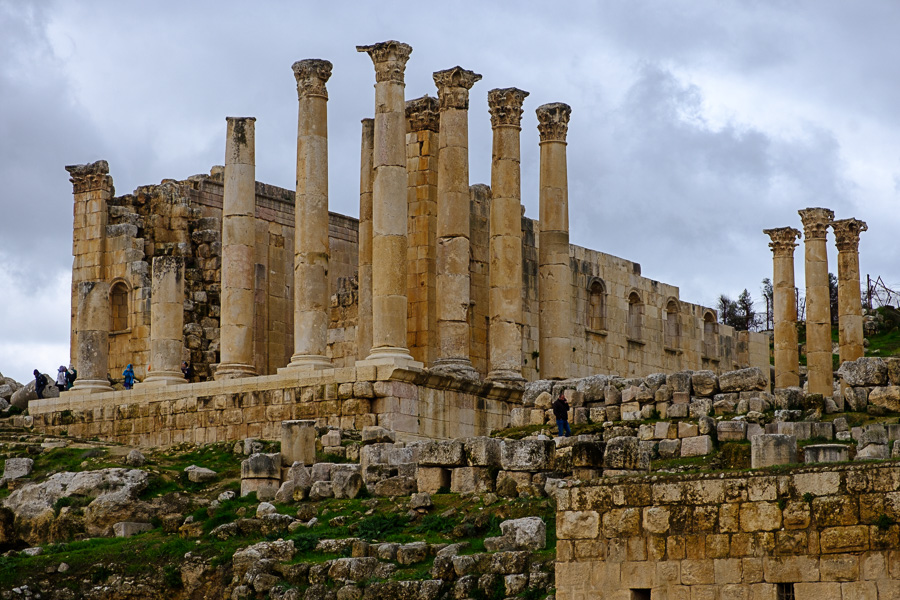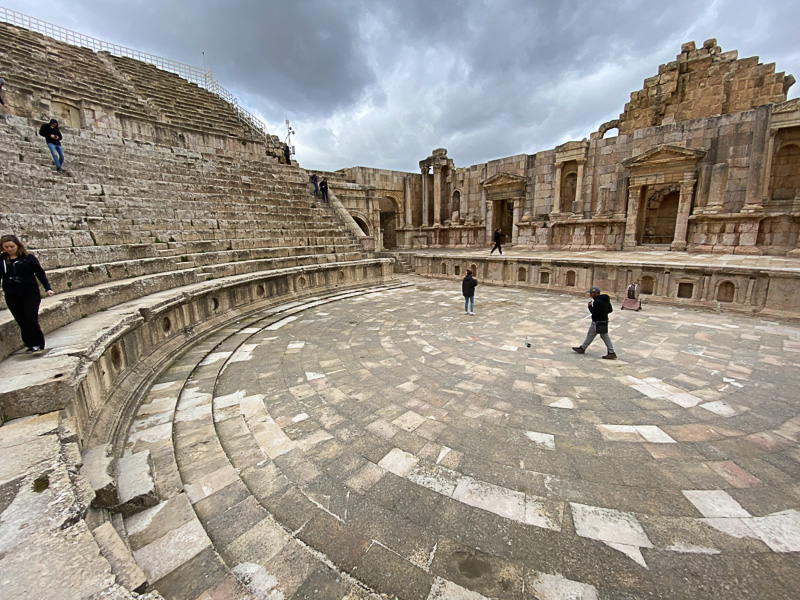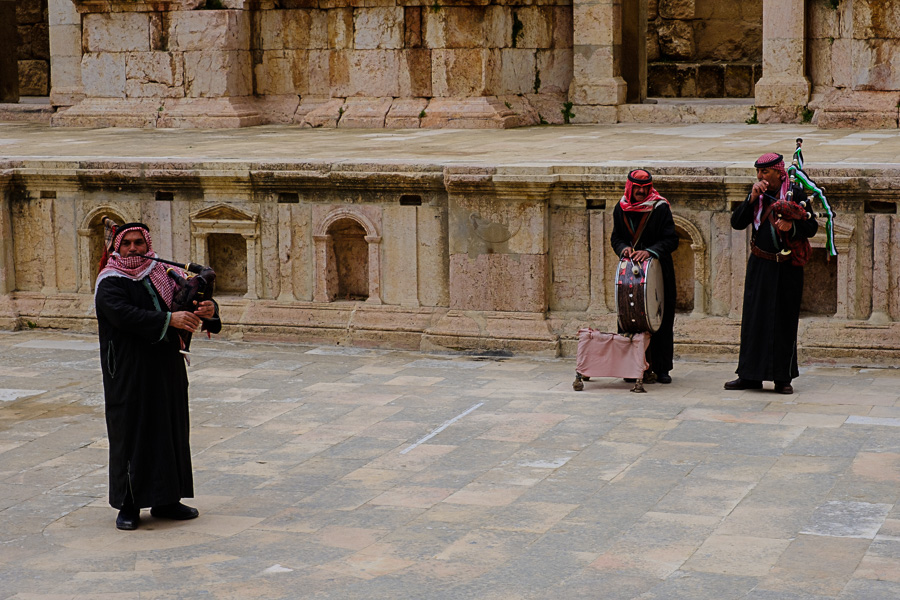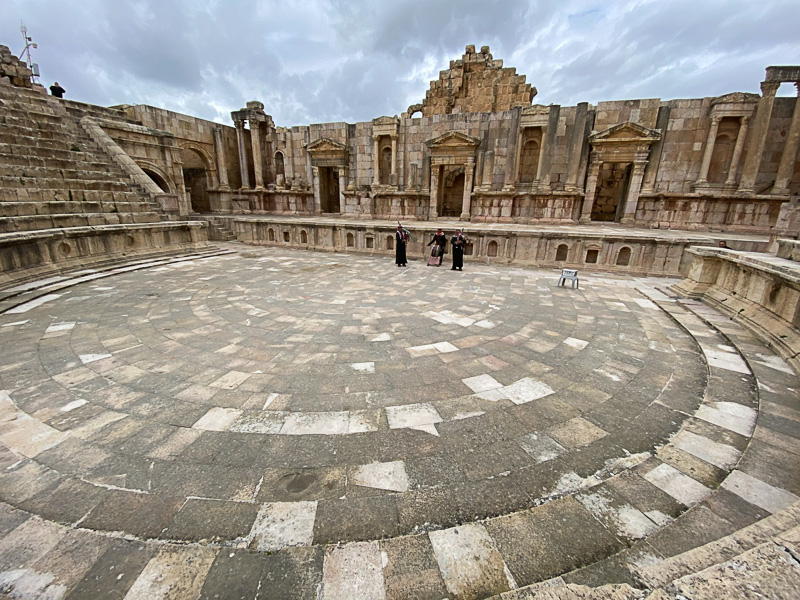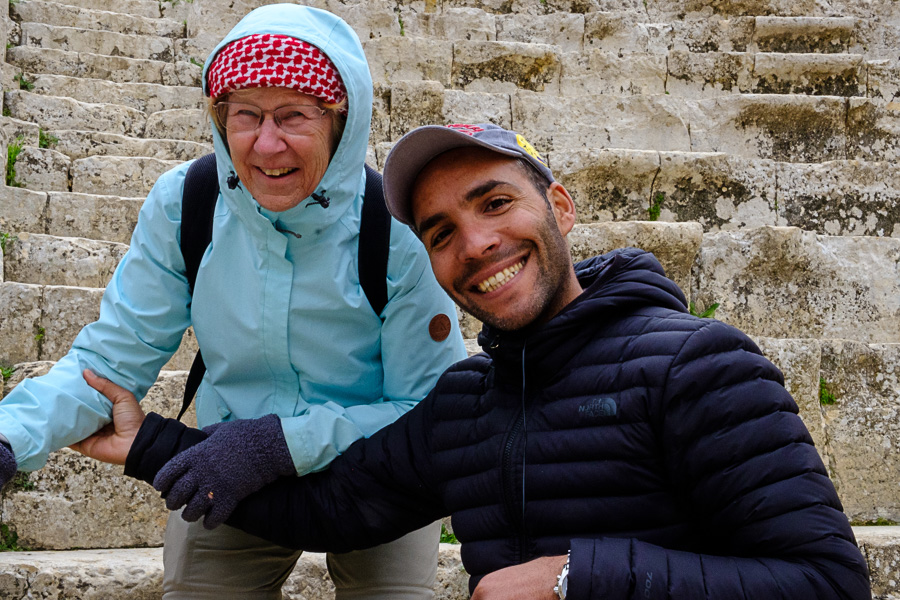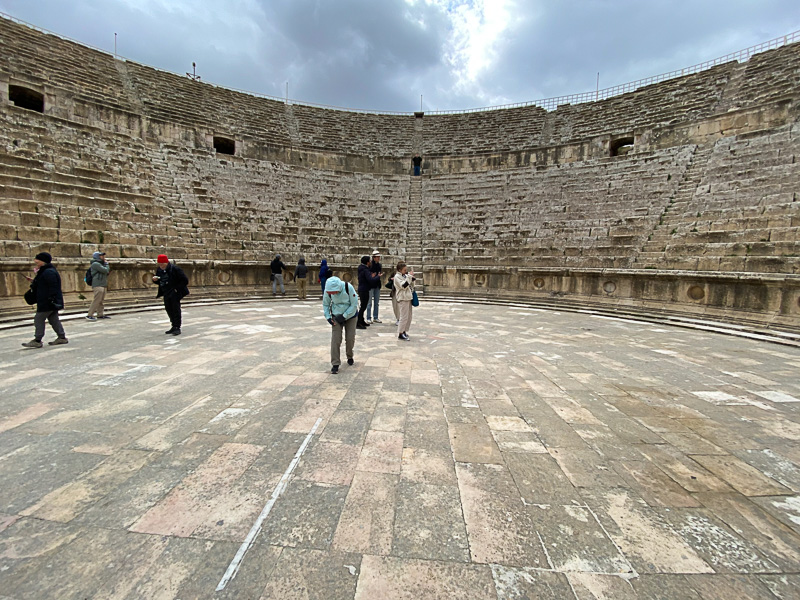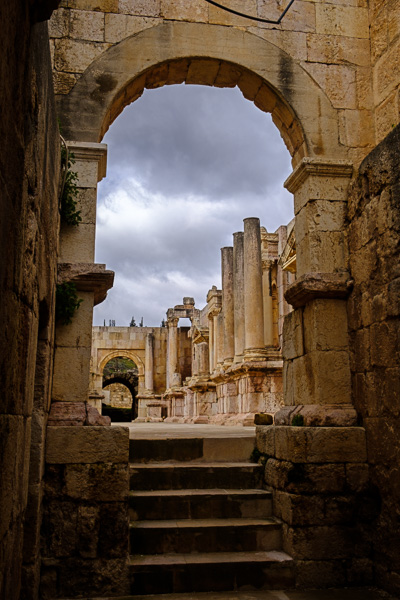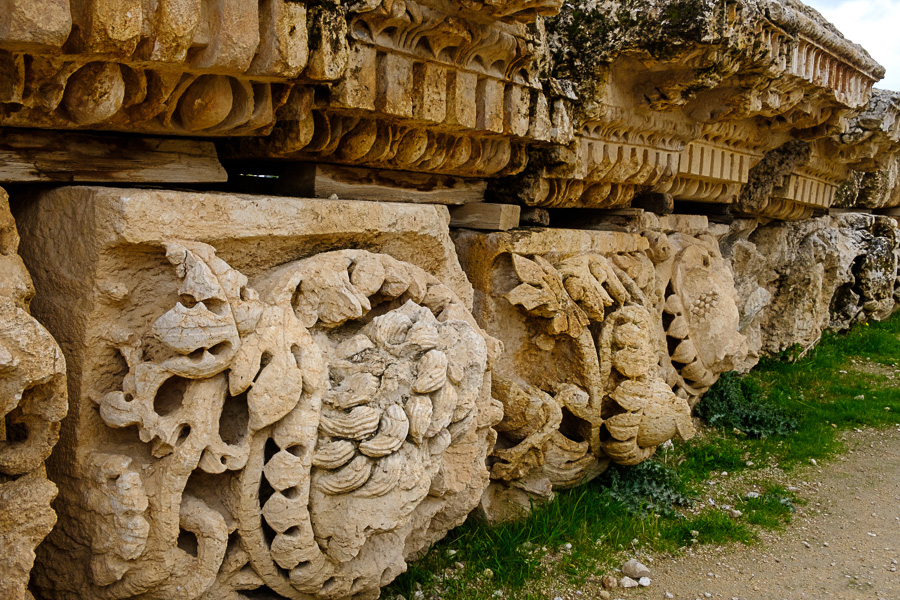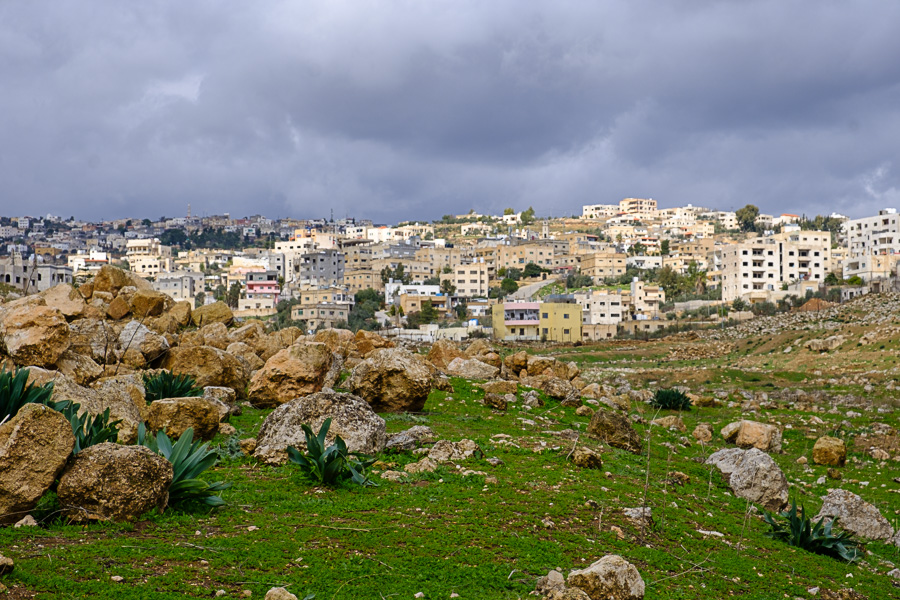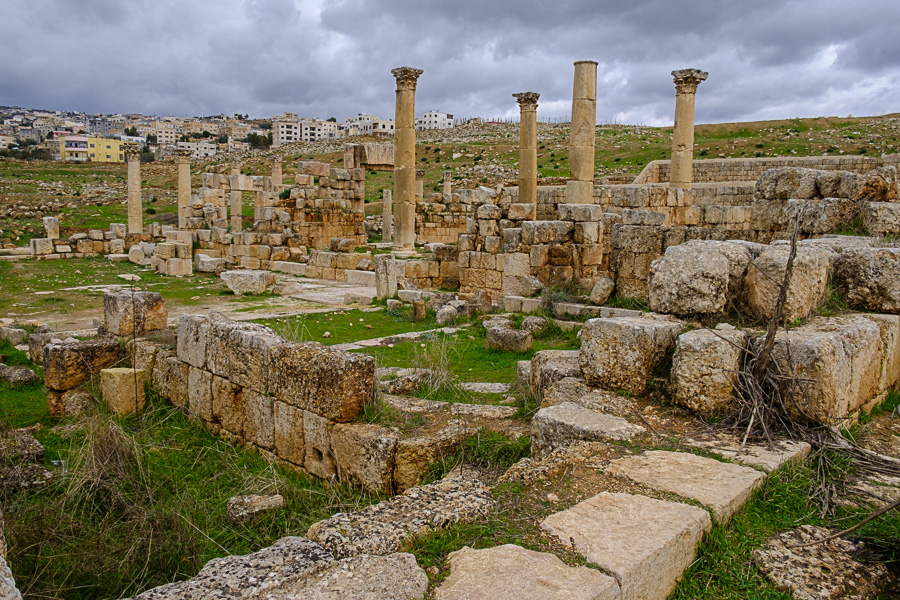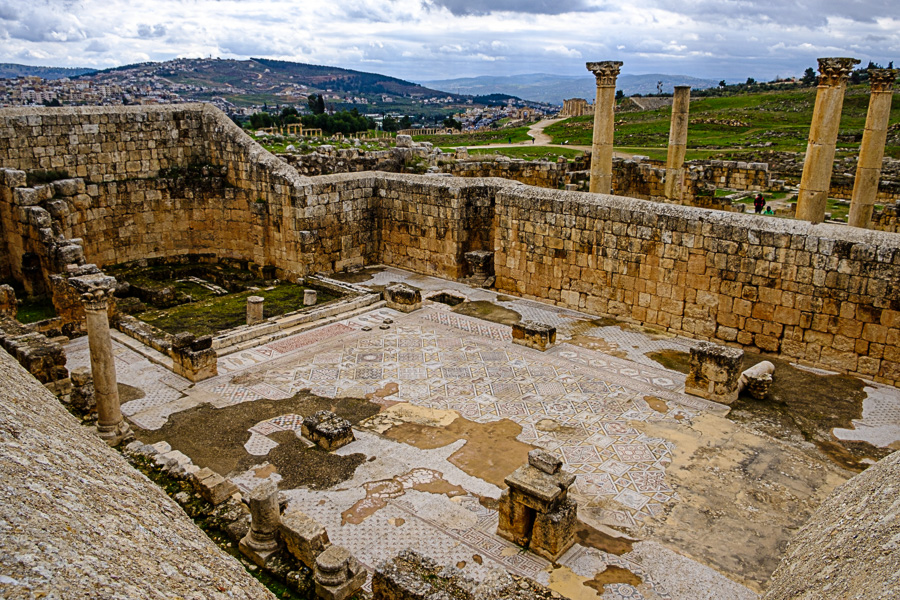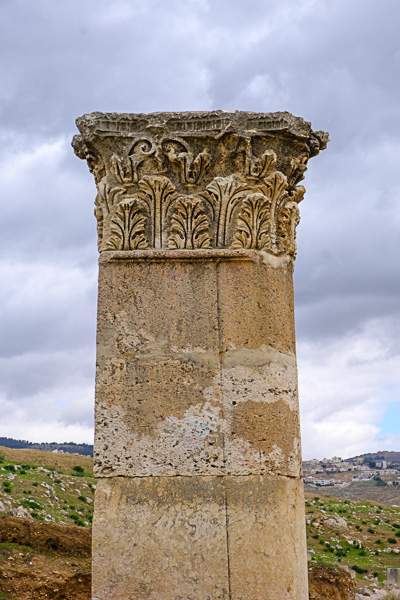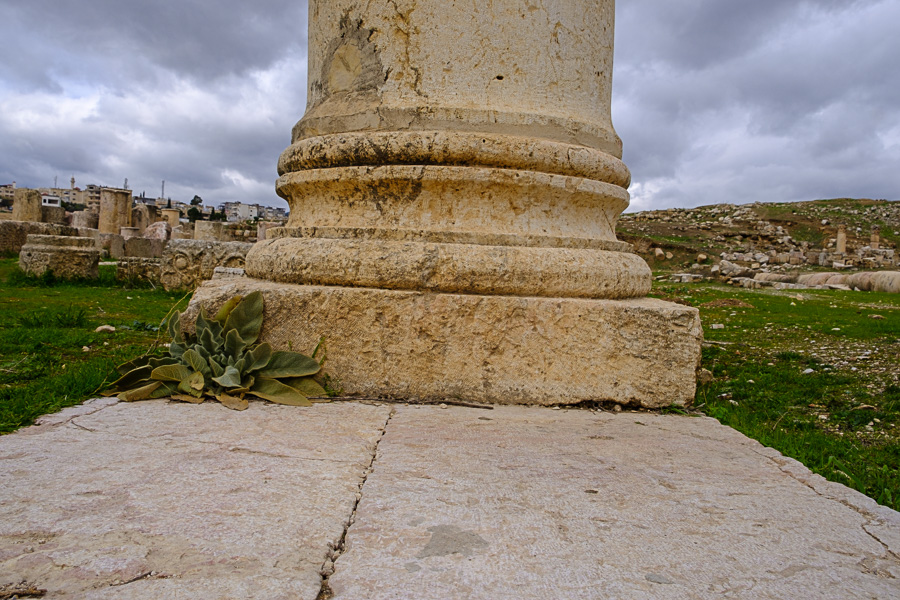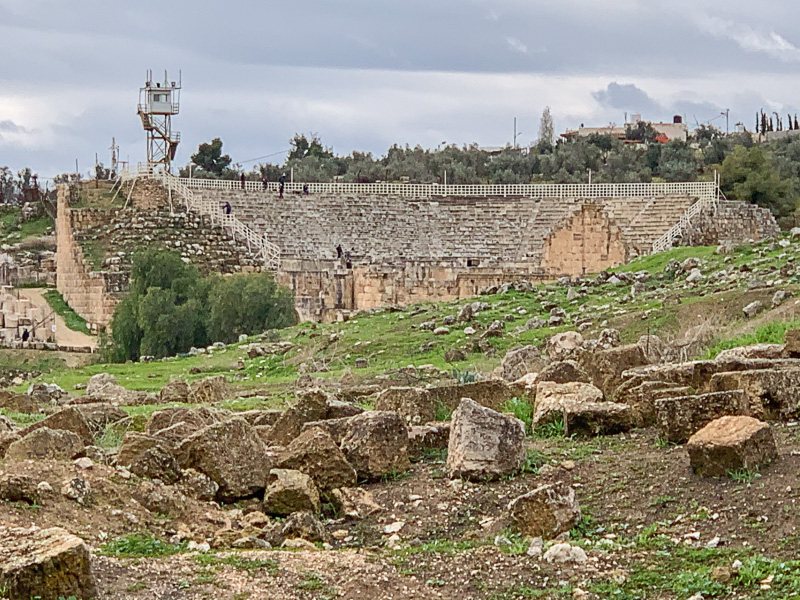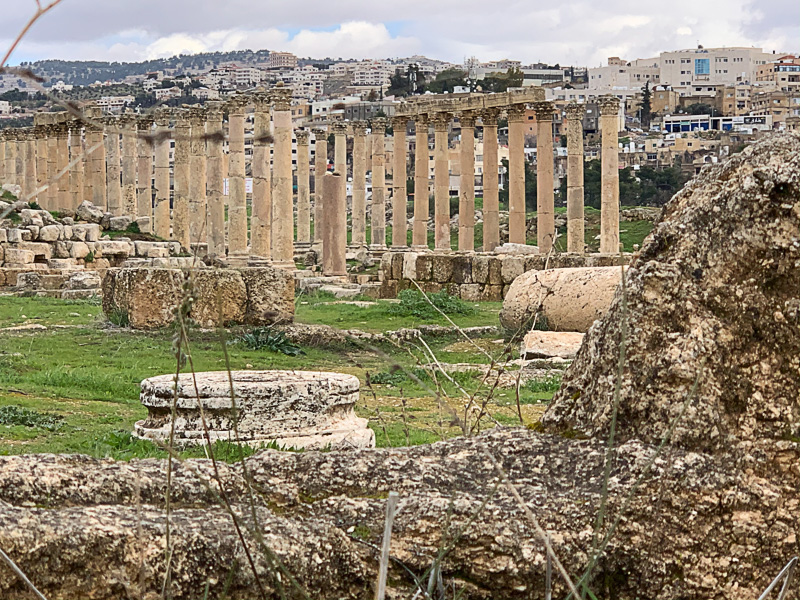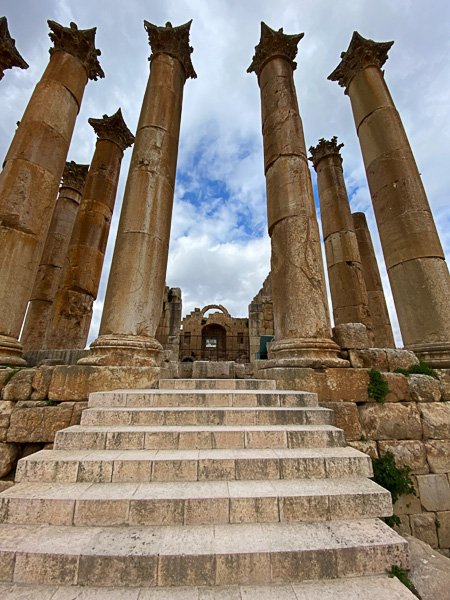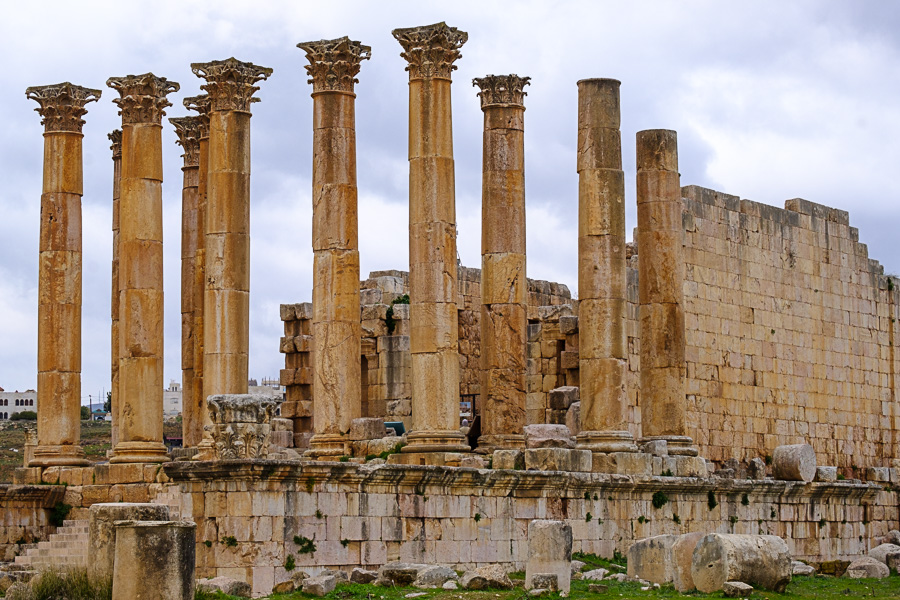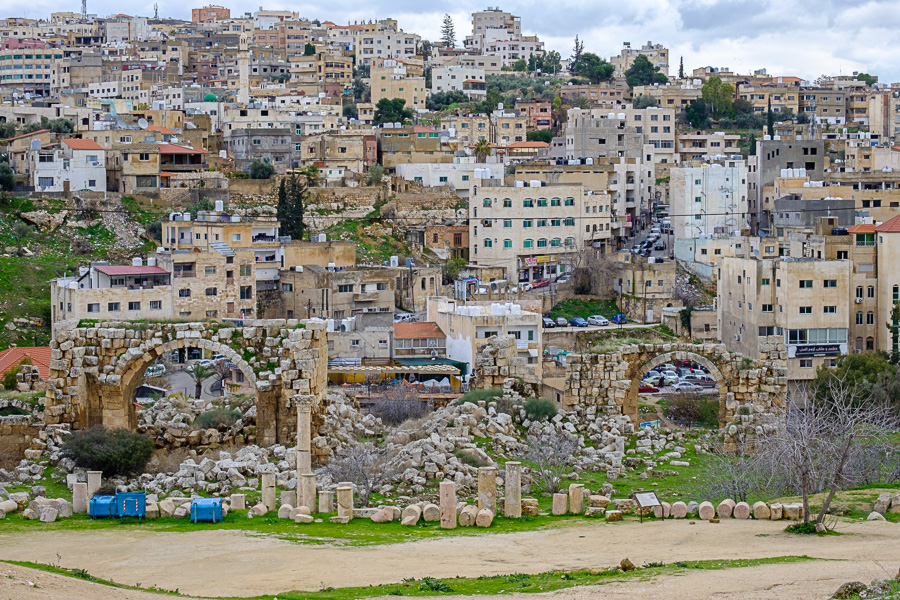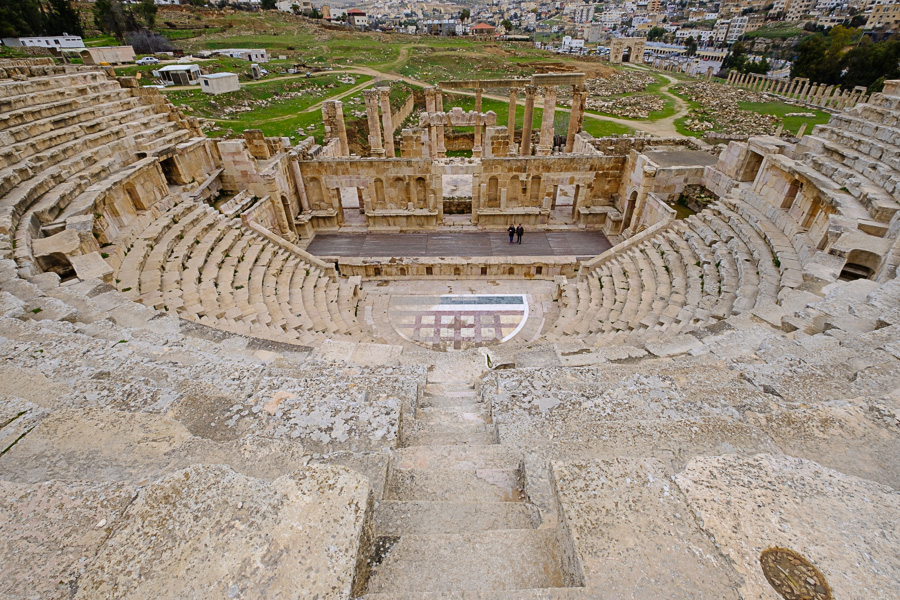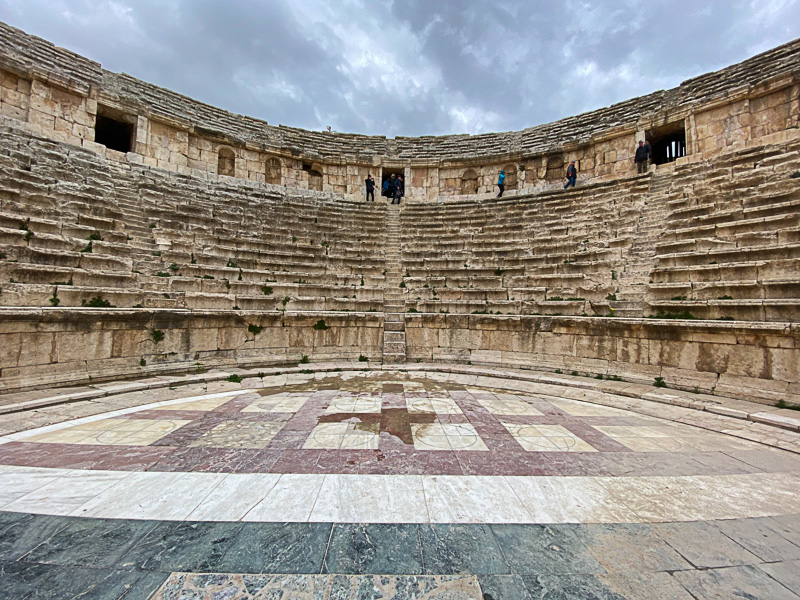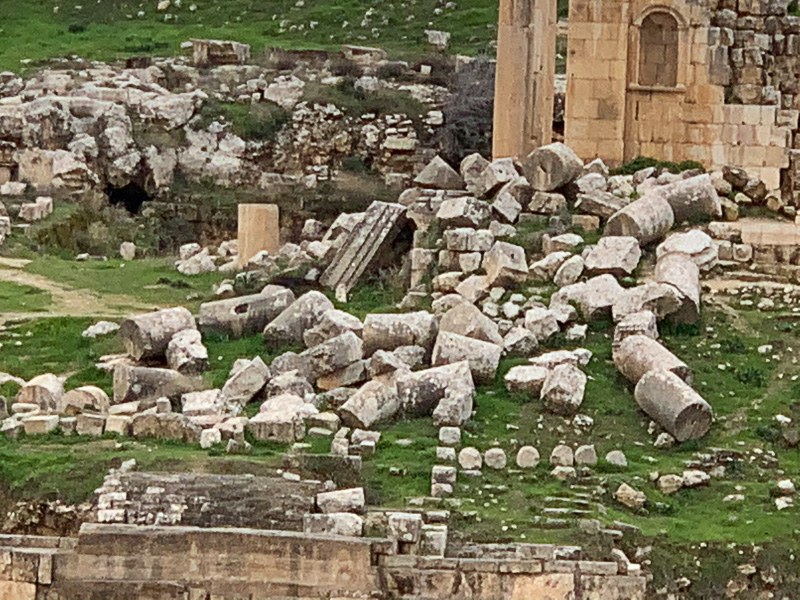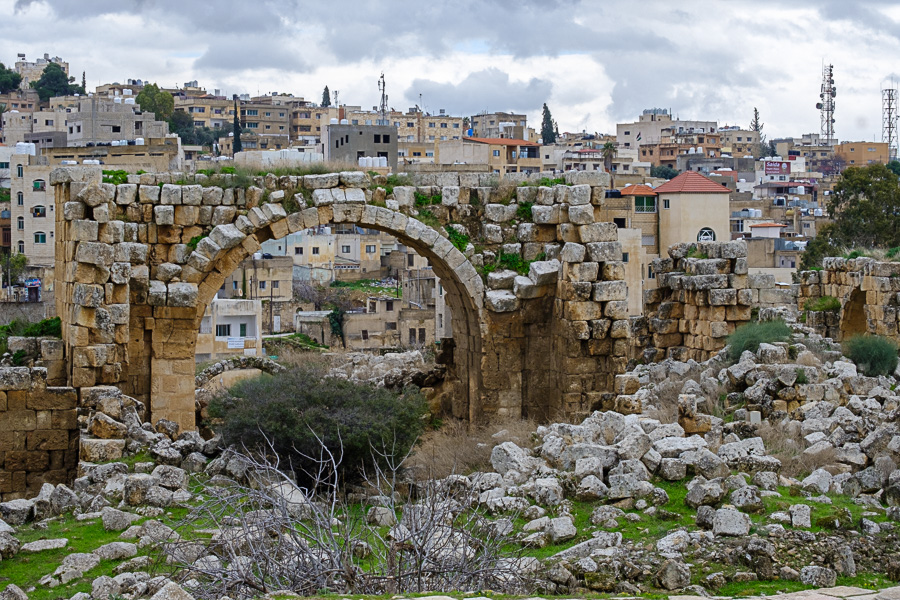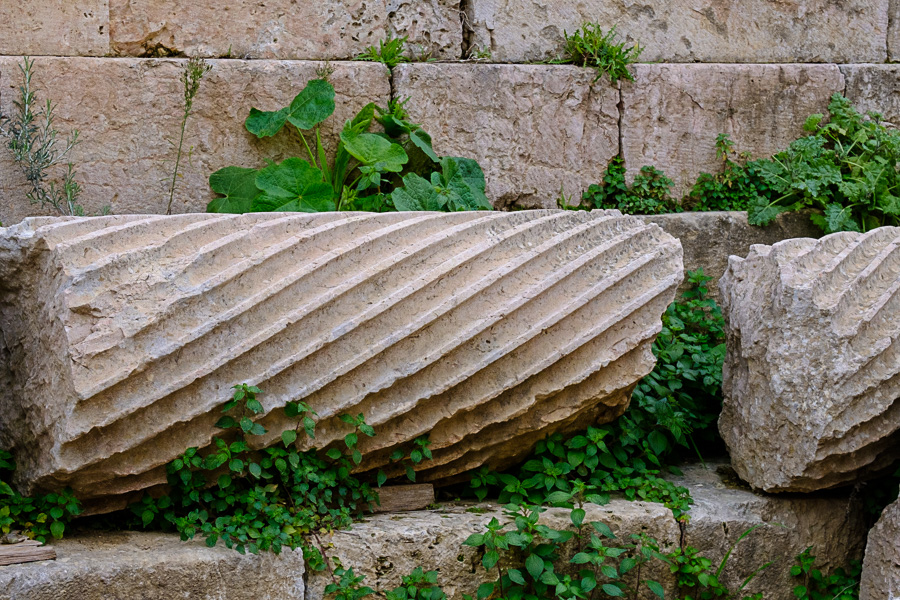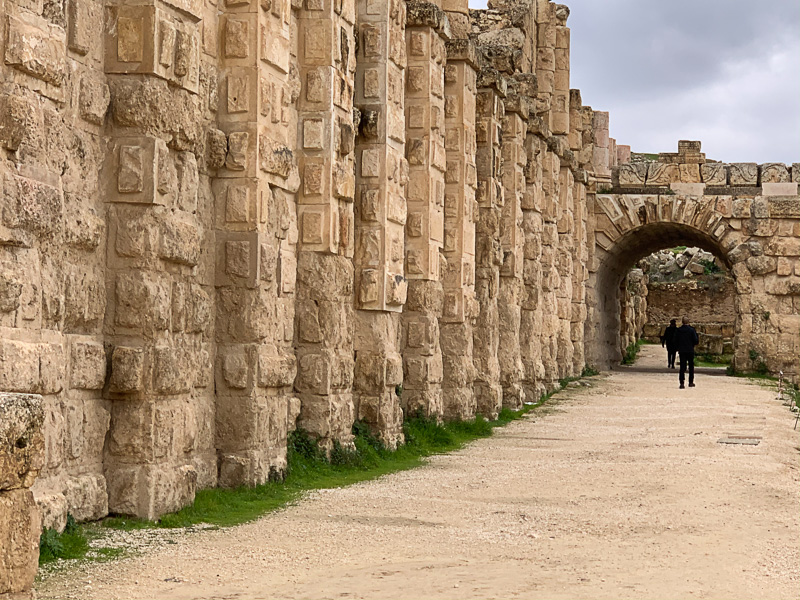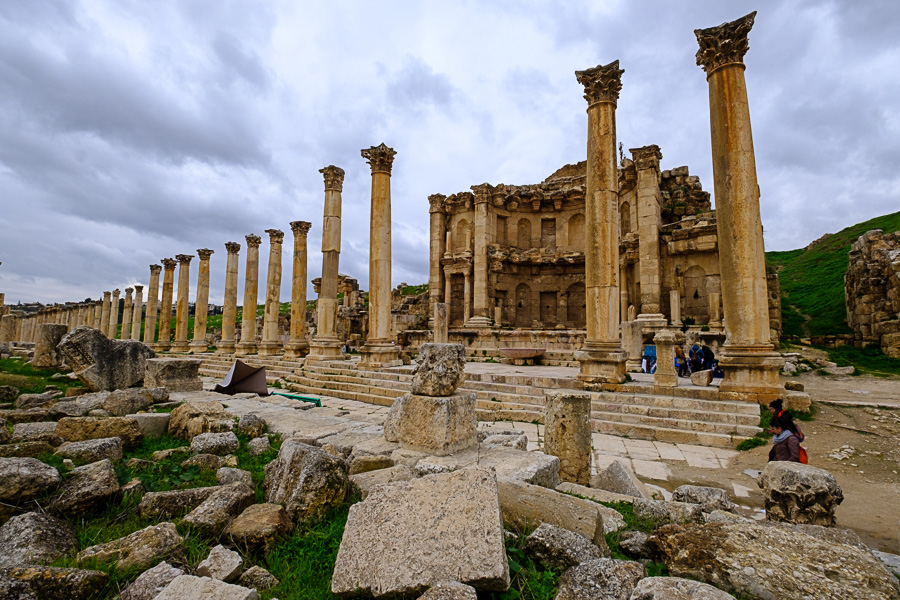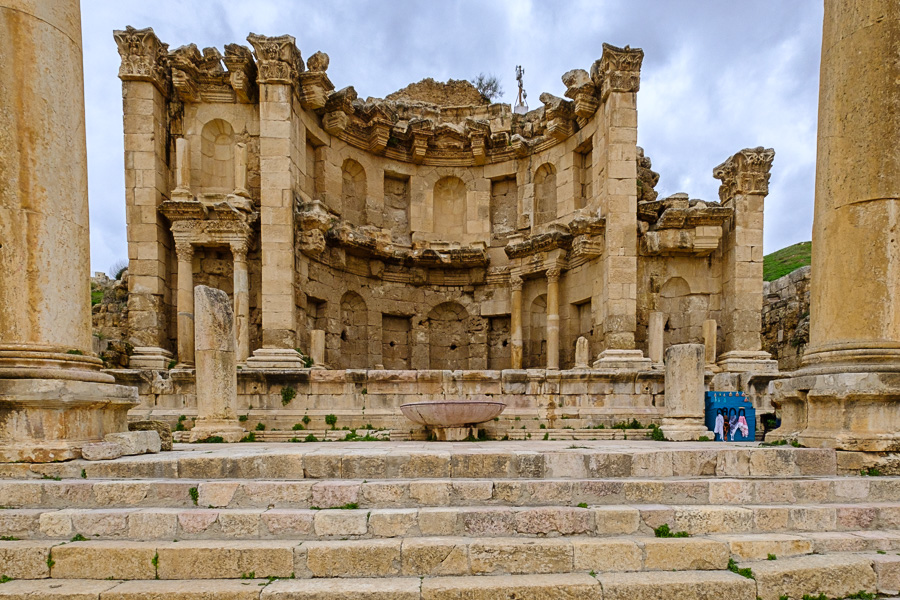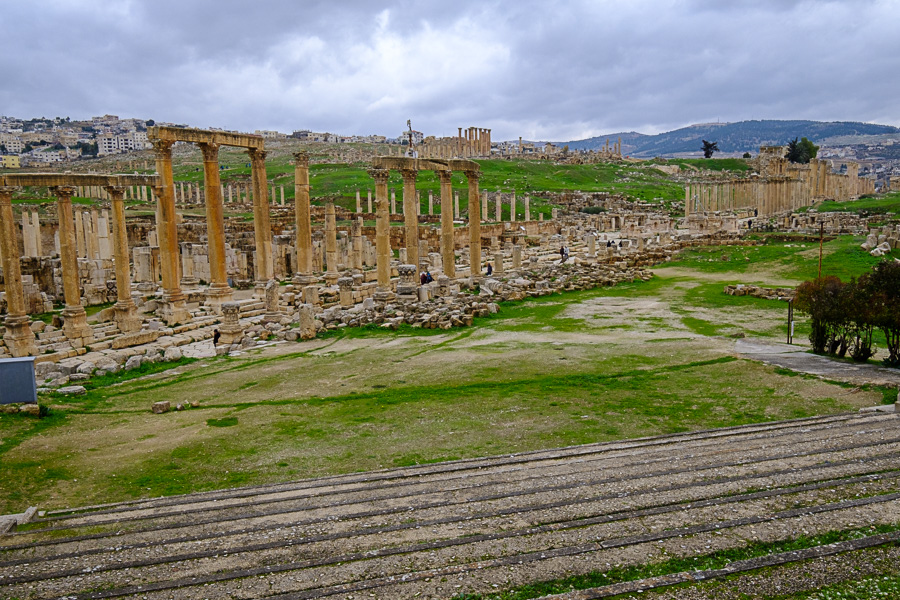Jerash (called Gerasa back in the day) sports some of the most complete, undamaged Grecian and Roman ruins than can be found just about anywhere. It’s a relatively small town about an hour’s drive north from Amman and about another hour’s drive to the Syrian border.
It’s a big complex. We started at the hippodrome (horse racing facility) and walked maybe a mile and a half viewing the city, actually one-half of the city, passing through a Hadrian’s Arch, two Grecian theaters (North and South), a huge oval forum surrounded by columns, a temple to Artemis with Corinthian columns, countless other columns with varying styles of capstones and a sea of rubble from structures that have not stood the test of time. Scattered among these ruins are the remains of a number of Byzantine-era Christian churches. The scope and grandeur of the whole thing takes your breath away. So did the 35-degree weather but we survived.
The half of the original city that remains was the public sector. The private sector has been taken over by modern Jerash. The contrast between old and new is striking in that their architectures blend well together.
The hippodrome is said to be the most complete in existence. The stables, starting gates, track and even the concession stands are all there. Some of the spectator seating remains; in its heyday it seated 15,000, small in comparison to Rome but this one is far more complete and hasn’t had to be rebuilt like most others.
The Greeks knew how to build theatres. Unlike the Romans, who built theatres as free-standing buildings, the Greeks built theirs into the side of a hill. Doug and I explored both and believe me, they are not for the faint of heart. The climb to the nosebleed section is steep and there are absolutely no guardrails nor anything else to stop a fall once it starts. Drink a few beers and sit in the hot sun and . . . .
Incidentally, we explored a different Greco-Roman theater yesterday in Amman (called Philadelphia in the Second Century AD). It seats 6,000; Jerash’s South Theatre seats 5,000 and the North Theatre about 2,000.
One really great feature of Greek theatres is their acoustic design. There is one spot in the center where a speaker’s voice is heard perfectly throughout. Clever indents in the stage’s walls act as amplifiers. The Romans messed up the acoustics of the Philadelphia theatre when they “improved” the Greek design.
Interestingly, the Greeks occupied Jerash for perhaps 300 years, in which time Greek became the language of choice among the local inhabitants. The Romans lasted 600 years, 1,000 years if you include the Byzantine era. Yet Greek remained the language and culture of choice; the Romans couldn’t displace Greek with Latin.
Gerasa has suffered from various invasions since the time of the Romans and an 8th century earthquake did a number on it. One reason that the city has withstood these calamities so well is that it was a late-Roman city. The Romans learned from their earlier mistakes in its construction. For instance, the columns here, made of stone sections stacked one on top of another, were protected from ground tremors by placing sheets of metal – copper, for instance – between sections. This provided a form of lubrication that allowed the sections to move slightly without falling over.
There are two small museums with interesting artifacts, but the real deal is to see the scope and grandeur of the entire city.
After returning to the Grand Hyatt refuge, another couple, Judy and I ventured forth in a taxi to find art galleries that Osama had recommended to us. Amman is built on hills (like Rome, but with more than seven hills). The streets climb the hills in a series of switchbacks that left us totally confused as to where we were and where we were going. One mile becomes three miles.
Our driver dropped us in a nondescript street. Sure enough, there was a gallery of a sort. It really was an art installation dedicated to the proposition that we, especially women, have identities defined by paper documents and our blood line. The highlight of the exhibit was a room whose walls were lined with bags of blood. Our visit was brief.
After wandering the streets a while longer (it was spitting snow by then) we eventually found Darat al Funun-The Khalid Shoman Foundation. Situated in six converted houses, the Foundation is a showcase and workshop for contemporary Middle Eastern art. Artists from Syria, Iraq, Iran, Sudan and Jordan were represented. We visited three galleries.
Now to get home. No taxis in view. No problem. The nice lady at the blood exhibit gave me wifi access and I called up an Uber ride. Three minutes later we were on our way. The taxi fare had been $7.50. The Uber fare was about $3.00.
So now we’ve had the farewell dinner and most of our friends, including Doug and Judy are on their way to the airport for their 2:30 AM departure. We are wimps; we booked a 4:00 PM flight tomorrow, will stay overnight in Frankfurt and catch the 11:00 AM nonstop to Tampa, getting in around 3:30 PM. Rebecca and the kids arrive Thursday and then it’s a week of non-stop fun. We’ll squeeze in some jet lag recovery time whenever we can.
So that’s it: this is the last posting I’ll be doing on this trip. You can, however, look forward to at least one more video posting from Judy.
Thanks for coming along with us!
Jon and Judy

